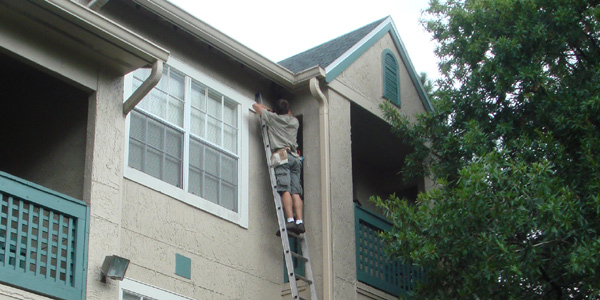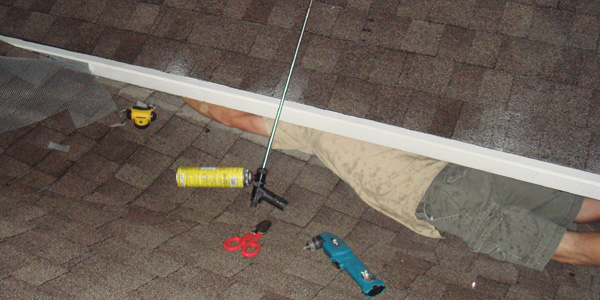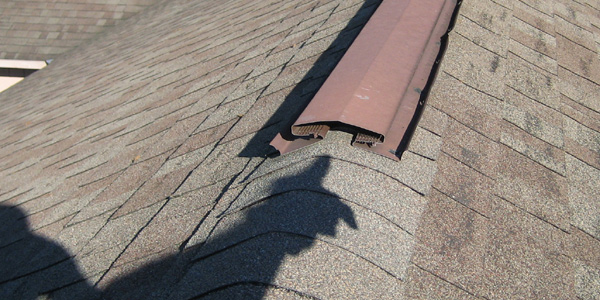- info@wildlife-removal.com
Call us for help in your town
Wildlife Removal Education
How Are Animals Getting Into Your House?
Need animal removal in your hometown? We service over 500 USA locations! Click here to hire us in your town and check prices - updated for year 2020.
HOW TO INSPECT YOUR HOUSE TO FIND WILD ANIMAL ENTRY HOLES - If you have animals inside your attic, or any other part of your house, the most critical part of solving the problem involves finding the entry holes, ALL OF THEM,
and sealing them shut permanently, with professional repairs that the animals can't get through. If this crucial step is not done correctly, it won't matter how
good you are at critter trapping, attic cleanup, rodent exclusion, or anything else. You must inspect the house and find the entry holes. This takes knowledge of
animal behavior, knowledge of building architecture, and the proper tools. If you need help, Click here for my nationwide list
of 100's of professional wildlife trappers serving all 50 states., updated year 2018, servicing over 500 US locations.

As far as the condition of your house is concerned, your wildlife neighbors - the raccoons, skunks, squirrels, or any animals in your area are no doubt keeping close tabs and may soon seek shelter either in your chimney, attic or under your porch or deck.
While we do love our wildlife, but we certainly don’t want them taking up residence in our houses uninvited. Yet, the pull of warmth, food, and water availability seems to be the only invitation that they need. In order to effectively block possible entry points, you must inspect your living space - especially around November - for potential wildlife issues in the spring.
An ingenious way to go about it would be to examine your house through the eyes of your local wildlife. Visualize the little crack and gap like a small mouse would do, for instance. Window wells, dryer exhaust vents, thresholds, and gaps in brick or siding can all provide possible entryways. To conduct your wildlife investigation, you will need:
- Binoculars to help in the inspection of the roof, chimney, and other high places in the house.
- A ladder to help you reach those high places for a proper evaluation – vents, slabs, etc.
- A flashlight to enable visibility in dark portions of your home.
- A camera to record what needs to be sealed so you can pass it on to the repairman without missing any one.

Here are some steps to guide you through a thorough inspection of your house. Do these at a convenient time and don’t rush it:
1. To start off, equip yourself with a good knowledge of the animal families that are local to your area. Take note of their feeding habits, body sizes, and their preferred hiding places – whether in attics (squirrels, bats, raccoons) or under floor boards (skunks, opossums).
2. Be informed about the local animals’ breeding seasons. This must be considered before any repair jobs are carried out on the house to prevent the helpless young from being harmed or orphaned. Late fall and early winter are considerably safe periods in this regard.
3. Inspect your outbuildings and your perimeter fencing, look for potential entry points with signs of digging, chewing, tracks, and even animal droppings.
4. Inspect attics with a flashlight for any signs of animals. Look for droppings, signs of chewing, and nesting material. Turn off attic lights and look for outside light leaking in through potential entry points.
5. Pay attention to the baseline of your building, especially in sections sporting an undergrowth. Check also for loose or missing vents.
6. Look for cracks and holes in the walls and seal them up after ascertaining that no animals are trapped inside.
7. Take note of any staining on the walls as this could point to a bat’s hideout. Things to look out for – scuff marks, dirt marks, bits of fur
8. Bats sometimes require a different type of inspection. Search your attic floors and on insulation for quarter-inch pellets that are a bit shiny and easily crumbled. You can also look out for them outside the house at dusk for a few evenings in a row to see if any bats exit to forage.
9. Inspect the vegetation around your building, considering that animals can use trees or bushes to access the house, especially those touching the structure. Some animals can even jump a 3-foot gap, yeah. So you may want to trim or outright cut trees within your 4-foot perimeter.
10. Pay good attention to the joins in the building, where different parts meet, as they are usually the target point for animals looking to nest – roof joints, pillars, gables, balconies etc.
11. Identify and replace all damaged wooden parts of your structure; they usually give first to seeking animals – loose vent screens, warped siding, trim board that is deteriorated and raised at the edges, or roof holes.
12. Ensure that your chimney is covered to keep owls and other birds out of it.
13. Most importantly, ensure that you do not seal any hole until you are sure that there is no animal inside of it. You can do that by plugging suspicious openings with a light material like insulation, paper, or cloth. Any resident animal would move the material within a few days.

Here are some other do-it-yourself articles I wrote that might help you:


















